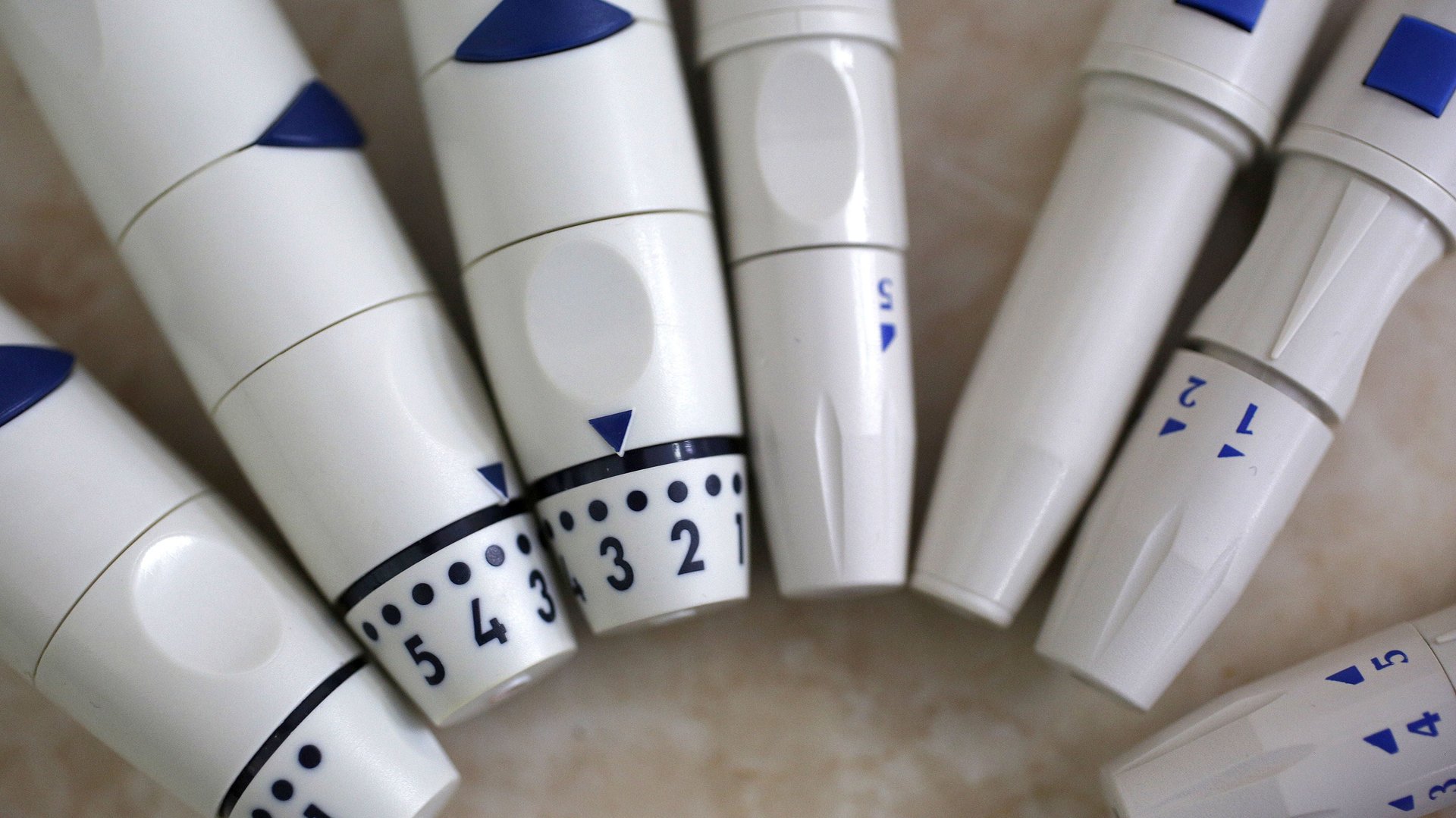Diabetics can now test their blood sugar levels with a mobile device
People living with diabetes have to prick their fingers to check their blood sugar levels anywhere from one to seven times a day.


People living with diabetes have to prick their fingers to check their blood sugar levels anywhere from one to seven times a day.
But now, there’s a better way to monitor blood sugar. This week, the US Food and Drug Administration approved the first at-home, needleless system for continuously monitoring glucose for people with diabetes. The system, called FreeStyle Libre Flash, and manufactured by the DC-based Abbott Laboratories, allows users to forgo finger-pricking for up to 10 days at a time.
The Flash is essentially a small, circular plastic sensor that sits on top of the skin and detects blood sugar from a small wire that goes under the skin beneath the sensor. People can insert themselves using an applicator that works sort of like a rubber stamp.
Once people have applied the sensor on their arms, they can wave a mobile device a little smaller than a smartphone in front of it to read glucose levels. It takes about 12 hours for the wire to become adjusted to the person’s body, but afterward the device takes continuous data that tracks blood sugar over time for over a week. Afterward, you peel the sensor off slowly, and apply a new one.
Ideally, this would encourage people with diabetes to check their blood sugar more routinely, Jared Watkin, senior vice president of Abbott’s Diabetes Care unit, told Reuters. Often, people will forgo checking their sugar levels as often as they should because finger pricking can be such a nuisance. Right now it’s only marketed for adults, but the company hopes to receive approval for children under 18 as well.
Abbott already has one needle-free blood sugar monitoring system available for the public called the FreeStyle Libre Pro. However, users have to make a special trip to the doctor’s office to have the wire placed under the skin every two weeks. The convenience of using the Flash entirely at home is a significant upgrade, although people will still need to visit their doctor’s office for an initial prescription.
Already, the FreeStyle Libre Flash is available in 41 other countries, the Chicago Tribune reports. There’s no word on how expensive it will be for patients, but in Europe they go for about $69. Abbott says they hope to start selling these devices to the public by the end of the year.